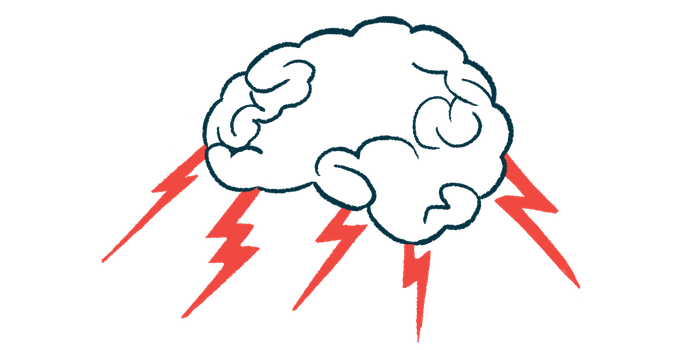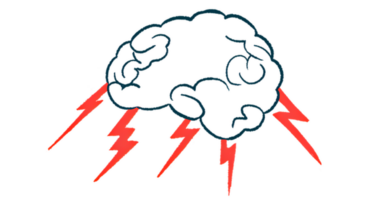StimFit Algorithm May Help Speed Process of Personalizing DBS Settings
Process is usually time-consuming and arduous for Parkinson's patients

An automated algorithm called StimFit may help speed up the time to finding optimal settings of deep brain stimulation (DBS) for each Parkinson’s disease patient undergoing the procedure, a new study shows.
The study, “Automated deep brain stimulation programming based on electrode location: a randomized, crossover trial using a data-driven algorithm,” was published in The Lancet Digital Health.
In DBS, electrodes stimulate targeted brain regions with electrical impulses
DBS is a non-drug treatment that involves delivering gentle electrical stimulation to specific parts of the brain through electrodes that are surgically implanted in the brain.
“There is no cure for Parkinson’s disease yet, but deep brain stimulation can improve many symptoms significantly, especially motor symptoms,” Andrea Kühn, MD, the study’s senior author at Charité University Medicine, in Germany, said in a university press release.
Kühn is the head of Charité’s Movement Disorders and Neuromodulation Unit.
The exact settings of electrical stimulation for the best symptom control varies from person to person, so the settings need to be personalized for each patient. Currently, this process is usually based on trial and error, which can be time-consuming and arduous for patients.
“To find a good setting, we test the respective effects and side effects of stimulating the different electrode contacts systematically,” Kühn said.
Seeking to make this process faster and more comfortable, Kühn and colleagues at Charité and other German institutions created an algorithm called StimFit to automate the process.
“We used the open-source software Lead-DBS, another Charité development, to determine the exact position of the electrodes in the brain based on [brain] image data and then include it in the algorithm,” said Jan Roediger, the study’s first author from Charité. “The next step was to train our algorithm with a dataset of over 600 stimulation settings, associated image data and effects on [symptoms].”
There is no cure for Parkinson’s disease yet, but deep brain stimulation can improve many symptoms significantly, especially motor symptoms
Study tests how StimFit compares with standard trial-and-error methods
Now, the researchers conducted a small clinical trial (DRKS00023115) to test whether the StimFit algorithm was comparable to standard trial-and-error methods at optimizing DBS settings.
“This represents the first prospective evaluation of a data-driven algorithm capable of suggesting optimal stimulation parameters based on electrode location in a fully automated fashion,” the team wrote.
The study enrolled 35 people with Parkinson’s (ages 44–74 years) who were being treated with DBS. All of the patients had already undergone a trial-and-error process to develop optimized settings before enrollment.
While exact times for optimization under standard methods were not available, the researchers noted that StimFit was able to generate parameters in less than one hour per patient.
The severity of motor symptoms was determined using part three of the Movement Disorder Society-Sponsored Revision of the Unified Parkinson’s Disease Rating Scale (MDS-UPDRS). Higher scores reflect more severe symptoms.
Motor symptoms were assessed three times within one day after overnight withdrawal of standard medication: once in the absence of stimulation, once under stimulation with standard-of-care settings, and once under stimulation using settings defined by StimFit.
A total of 18 patients (15 men and three women) received StimFit-based stimulation followed by standard-of-care stimulation, and 17 (eight men and nine women) received stimulation in the opposite order.
“Neither the study participants nor the medical professionals knew the order in which the stimulation settings were applied,” the release stated.
Without stimulation, the patients’ average MDS-UPDRS score was 47.3 points. Under standard-of-care stimulation settings, the average score decreased to 24.7, a 48% improvement. With StimFit settings, scores improved similarly, decreasing to 26.3, a 43% improvement.
Statistical tests showed that the results under standard-of-care and StimFit settings were comparable, demonstrating non-inferiority of the StimFit-based method.
“The patients’ general mobility and also their [walking pattern] improved equally well with both types of stimulation settings. This is a truly promising result,” Kühn said.
Closer analyses showed that observed motor improvements under StimFit were comparable to standard-of care for akinesia-rigidity (by 43% vs. 46%) and axial symptoms such as freezing of gait, and posture and balance issues (by 35% vs. 36%). However, StimFit was somewhat less effective at reducing tremor (by 62% vs. 70%).
The researchers said this was likely because the programming of StimFit used in this study had data on other symptoms, but not tremor. This finding “emphasizes the importance of taking clinical information into account in imaging-based DBS programming procedures,” the team wrote.
The patients were also asked to rate their perception of treatment efficacy on a scale from 0 to 100. The average score was significantly higher for standard-of-care than for StimFit, but this difference was no longer significant after adjustments for tremor severity.
“It is therefore likely that an optimization procedure tailored to the patient’s symptomatic profile will also improve their subjective perception of treatment benefit,” the researchers wrote.
“In six patients (17%), initial programming of StimFit settings resulted in acute side-effects and amplitudes were reduced until side-effects disappeared,” the team wrote.
Promising step toward using automated processes for DBS optimization
Of note, three patients developed dyskinesia, or uncontrolled movements.
“Dyskinesias are usually thought of as ‘on-target’ side-effects and could therefore indicate a high efficacy of StimFit DBS,” the researchers wrote. “On the other hand, different approaches to medication adjustment might be needed during long-term StimFit stimulation.”
The team noted that this study is limited by its small size and single-center nature, but the findings are a promising first step toward using automated processes to speed up DBS optimization.
“Additional longitudinal studies are required to confirm long-term motor benefit and to assess the impact of data-driven DBS programming on quality of life, … medication, and programming time,” the researchers wrote.
The team is also working on the development of models that consider all symptoms of each patient and that can accurately predict the likelihood of side effects. This is expected to improve the algorithm-based stimulation settings and subsequent therapeutic benefit, and pave the way for further clinical trials.








